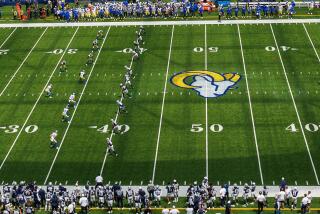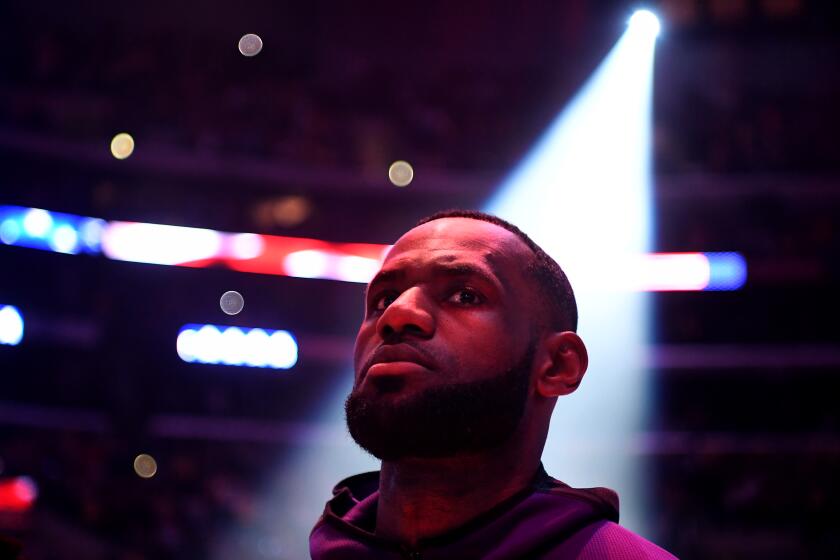Ban on Headfirst Tackling Has Reduced Injuries, Study Says
- Share via
CHICAGO — Disabling spinal injuries to football players in college, high school and recreational programs have declined by 75% since rule changes in 1976 outlawed spearing and other headfirst tackling, a new medical study concludes.
The number of deaths resulting from head injuries after 1976, however, showed a much more modest decline, dropping 22%, according to the study published in today’s Journal of the American Medical Assn.
“Those numbers are very encouraging but not good enough,” said Joseph Vegso, a trainer and staff member at the University of Pennsylvania Sports Medicine Center in Philadelphia where the study was performed.
“Kids think they’re invincible, that their head is just another part of the body to tackle with,” Vegso said in a telephone interview. “The burden now is to educate the parents, coaches, school administrators and the kids themselves before the bad habits become ingrained.”
The study also looked at non-fatal and non-disabling head and neck injuries by comparing statistics compiled by a previous researcher for 1959-63 with those from the Football Head and Neck Registry for 1971-75 and 1976-84.
The last two reporting periods followed significant improvements in the strength and protection afforded by helmets and face masks.
“As a result,” the authors noted, “the use of the head as a primary point of contact in blocking, tackling and head-butting occurred.”
Vegso said the researchers studied slow-motion films of more than a dozen tackles that resulted in disabling injuries and calculated that the force exerted on the spine during such collisions ranges between 400 and 800 pounds. Defensive backs were the players most at risk of suffering disabling neck injuries, followed by linebackers, the study said.
While an average of six players each year during 1959-63 suffered neck injuries resulting in cervical quadriplegia, or permanent paralysis below the neck, that number had risen to an average of 20 players being disabled each year by the 1971-75 figures.
In 1976, the first season in which the NCAA’s rule modification went into effect and was adopted by the National Federation of State High School Assns., the number of paralyzing injuries was 34.
But by the 1977 season, the number dropped to 18, beginning a steady decline that totaled just five such injuries in 1984--a decrease of 85% since the rule went into effect.
However, the rule changes and better equipment have not significantly reduced the number of head injuries resulting in deaths. Statistics showed an average of 13 such fatalities each year in the reporting period 1959-63, 11.6 in 1971-75 and nine in 1984.
More to Read
Go beyond the scoreboard
Get the latest on L.A.'s teams in the daily Sports Report newsletter.
You may occasionally receive promotional content from the Los Angeles Times.










